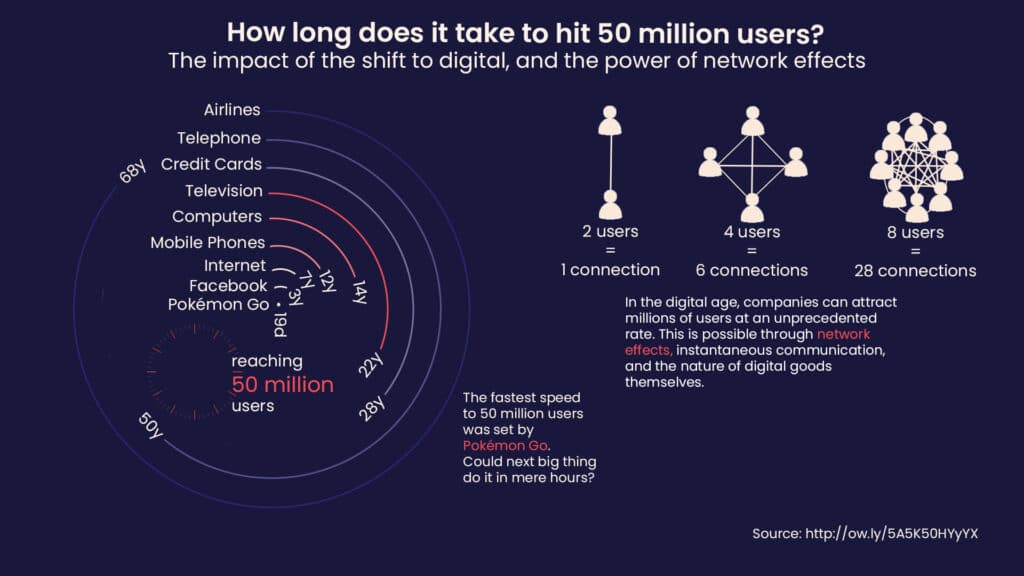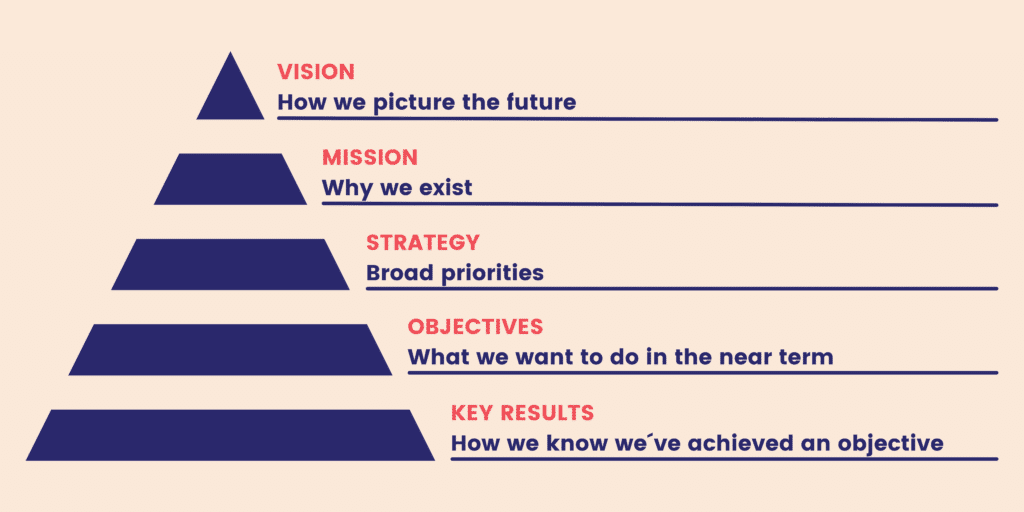The vortex of change
Change is happening faster and faster—and it’s been that way even before a bowl of bat soup at the market in Wuhan changed the way our entire world works.
Let’s take a look at some statistics to illustrate at which incredible speed trends are forming, markets are changing, and companies are facing always new challenges. While it took 7 years for the internet to reach 50 million users, the famous smartphone game, Pokémon-Go, reached the same number of users within the incredible timespan of just 19 days.
Source: https://www.visualcapitalist.com/how-long-does-it-take-to-hit-50-million-users/
This crazy speed leads companies to face new challenges over and over while making traditional, long-term planning a task ranging between difficult and impossible. So, how can companies face this uncertainty without sliding into the vortex of change and ending up in chaos? The answer is: OKRs!
What exactly are OKRs?
OKRs are the agile management method par excellence. The acronym stands for “Objectives and Key Results,” and the method’s biggest advantage is that it offers companies a framework for making decisions in a logical, pragmatic and fact-based manner while enabling them to act on short notice as well as flexibly. The basic idea here is that in today’s complex, dynamic world those companies which are able to focus on their pivotal, value-creating tasks will be the most successful. OKR mastermind Andy Grove aptly put it into words: “If you focus on everything, you focus on nothing.”
Rather than contradicting a company’s long-term vision and strategy, OKRs perfectly complement them. They enable an organization to prioritize and align all activities on an operational level to make sure they best support that vision and strategy.
Source: Leaders21 OKR Handbook EN
OKRs are for start-ups only … aren’t they?
The success story of the OKR method is often associated with big digital players like Google, Twitter, or Spotify. Why? Because their industries are especially prone to frequent change and characterized by disruptions, which is why the ability to act fast is a critical success factor.
Whether working with OKRs makes sense or not for a specific organization isn’t determined by its line of business, size, or industry, but only by the company’s mindset. The success of this method depends solely on the fact that every single employee understands exactly which role they play within the organization and their ability to interpret this role correspondingly.
Framework conditions—how to be successful with OKRs
- Visionary thinking: Everyone is encouraged to think outside the box, get creative and proactively look for the best solutions.
- Empowerment: Employees are willing to deliver great performance, they are eager and able to focus on those things that will best contribute to the company’s success.
- Transparency: The entire organization is completely transparent with regards to its strategic goals and operative initiatives to enable the entire team to contribute to the company’s success on a holistic level.
- Communication: The organization puts emphasis on and fosters open communication in order to collectively and coordinately work towards its objectives.
How do OKRs work in real life?
During our first year in business as Leaders21, we had the opportunity to accompany various organizations in introducing the OKR method. Despite their points of departure being very different from each other, the critical success factors were very similar.
The framework conditions mentioned above, as well as full support by an organization’s leadership are mandatory to facilitate alignment and prioritization within the organization. On an operational level we strongly recommend to do things “by the book.” While the OKR framework requires and fosters communication and agility, it is very rigid when it comes to complying with meeting structures and formats, as well as documentation and tracking. This straitjacket often turns out to be the biggest challenge for companies when they start working with OKRs. They are not used to having to keep up with the fast-paced quarterly planning and measuring of results, and the need to bring their daily work into line with this kind of prioritization.
Our Leaders21 approach introduces companies step by step to the OKR methodology and makes sure the entire organization is on the same page right from the start. That’s why we usually see first signs of success already in the first quarter, while teams are able to take over full responsibility for the entire planning cycle starting in the second or third quarter at the latest, meaning that the entire organization is able to direct all activities towards the objectives that were previously developed together.
Sounds exciting?
If we sparked your interest and you’re eager to know more about OKRs, you’ll find a great, detailed overview of the methodology here. Of course, we’re always happy to answer your questions personally too 😉
Fritz Krassnitzer
Email: fritz.krassnitzer@leaders21.com
Link to profilepage



